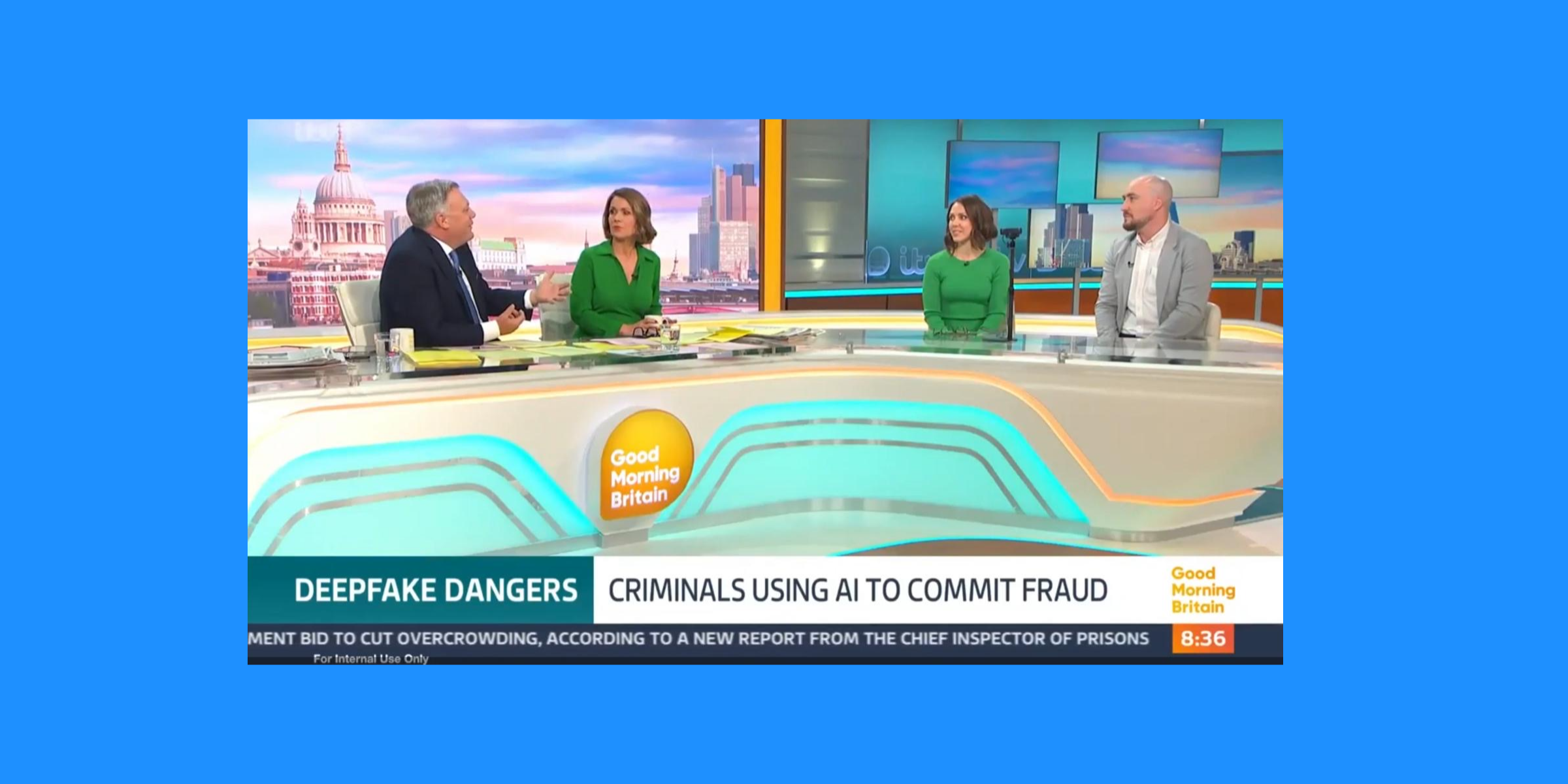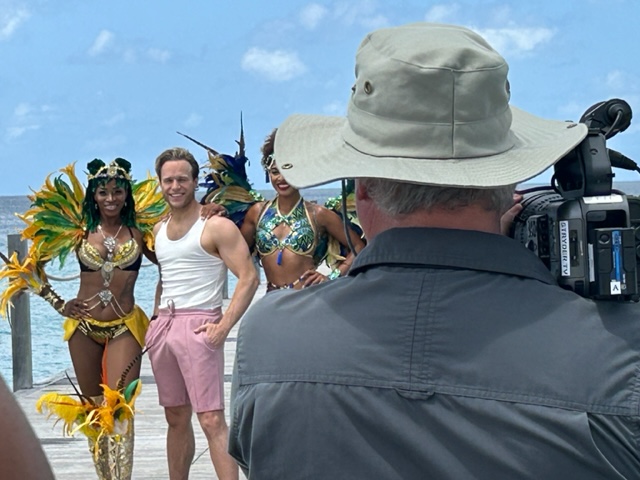So, you’ve been invited to appear on TV and, if it is your first time, you may be feeling a bit nervous. Worry not, in this article we’re going to give you top tips so you can handle your TV appearance like a pro.
Television is one of the most popular forms of broadcast media.
According to Ofcom, Brits spend an average of 2 hours and 38 minutes a day watching broadcast TV.
Data from the regulator’s latest Media Nations 2023 report, which looked at the UK’s viewing and listener trends, shows that BBC One (20%) and ITV1 (13%) are still the top two first destinations for viewers when they turn the telly on.
Additionally, watching broadcasters’ content – whether it’s live, on recorded playback or streamed on-demand – still accounts for the greatest proportion of all time spent each day watching TV and video.
This is 2 hours and 41 minutes per person per day.
And while it is true that traditional broadcast TV viewing is declining, social video platforms remain a major part of people’s media habits, especially youngsters.
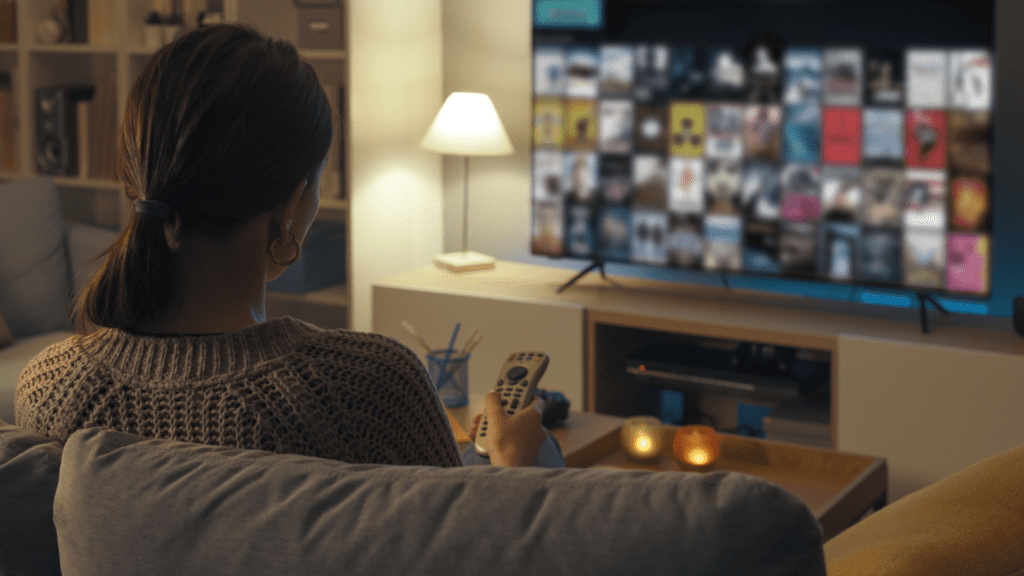
Reasons to appear on TV
There are many reasons why you should consider appearing on television. It is not only a popular form of broadcast media, but also a trusted one.
Making a TV appearance can potentially take you to new audiences, while boosting your credibility and improving your brand awareness.
Becoming a campaign spokesperson is an effective way to get invited to appear on TV. In practice, you would be putting yourself forward to give interviews about one story related to your brand, becoming the go-to person if broadcasters want to cover it. The story could be about new research, perhaps a product launch, or even a partnership announcement.
Some campaigns run on a specific day, while others can run over a weekend or even a full week. There is a lot of competition, so sometimes it is helpful to be slightly flexible with timings to maximise interview opportunities.
Outside of specific brand campaigns, you could also appear on television to offer your professional insights.
It is common for TV producers to look for experts in their field who can comment on current news stories. For example, if you work in personal finance, you may be booked to give an interview on what a change in interest rates means for borrowers and savers.
If you are a good talker and prove to be reliable and knowledgeable you could end up appearing on TV on a regular basis.
Top tips to handle TV appearances like a pro
Arrive early
Avoid unnecessary stress by giving yourself plenty of time to get to the location of your television appearance.
If you’ve been booked for a live interview but arrive late, it is very likely that you will miss your slot altogether. Sometimes, there is some wiggle room and producers can shift things around to ensure you still make the programme. However, they won’t be happy that they have to make changes to their rundown or even end up with a gap because you failed to prepare for traffic or train delays.
The same urgency applies to pre-recorded interviews, as these are normally part of a tight schedule. If you arrive late, you may be creating a problem for producers and technical crew who have to go on to film other interviews elsewhere.
In any case, you want to avoid producers thinking that you are unreliable as that can have a negative impact on your reputation.
Check the dress code… and don’t wear green!
Unless you are familiar with the programme you’re going to be appearing on, you should ask the producer what the dress code is.
Most of the time, you’ll be told to wear whatever you want, and in some circumstances, casual attire is absolutely fine. For example, you may be doing an interview on location because a storm has flooded your business. Or perhaps it’s the hottest day of the year and the programme wants to make a point of that by asking guests to wear t-shirts and shorts.
However, it could also be that you’re going on television during a period of national mourning, in which case you’ll be ask to wear black or sombre colours.
Also, if you’re appearing on TV towards the end of October / beginning of November you will be asked to wear a poppy on screen. You can decline but it may be helpful for you to know beforehand.
And, of course, regardless of the context, make sure you don’t wear green or patterns that could strobe on screen.
Bring make up
Most people who appear on television need make up, even if it is just a little bit of translucent powder to avoid a shiny face.
Most major channels and even some regional stations will have a make up artist in house ready to provide a quick touch up and even what is commonly known as a “full face”.
If you think you will require the latter, it is always a good idea to do your own base at home – that means foundation, powder, and concealer – or, at the very least bring your own products with you. This is because the make up department may have run out of the particular shade that matches your skin tone. You should also bring your own mascara for hygienic reasons.
In any case, it’s always worth flagging up your make up needs to the producer at the point of booking so they can advise what is available and what you may need to bring with you.
Turn off your mobile phone
It’s a tip that sounds obvious when appearing on TV, but you would be surprised at the number of times a phone goes off in the middle of a television segment.
It’s not just phone calls or texts that you need to worry about, it can be your doorbell app telling you that someone is at your front door or even an alarm you had forgotten about.
‘Silent’ or ‘do not disturb’ modes are just not good enough any more. If you want to be completely safe, just switch your phone completely off.
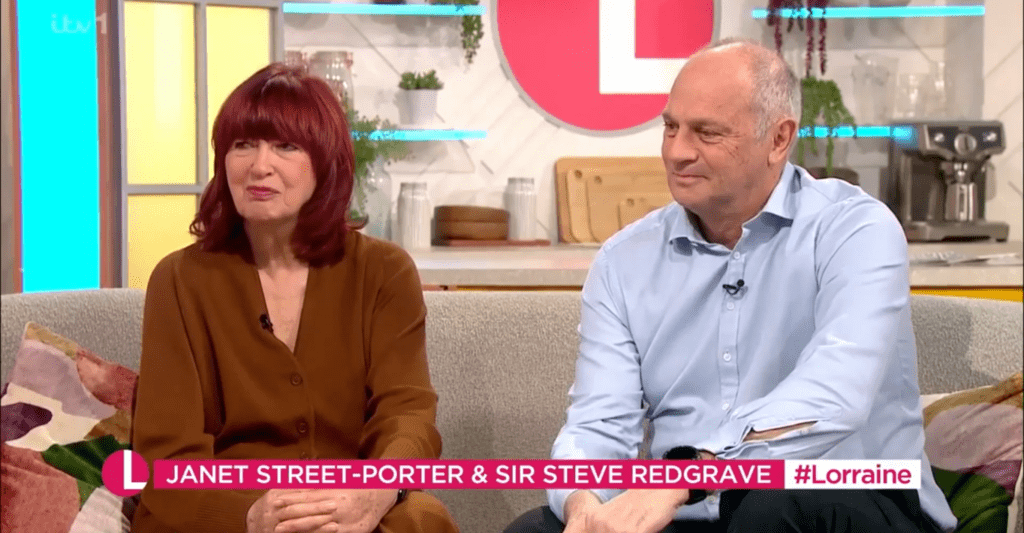
Top tips for once you're in a TV studio
Look in the mirror
Do a final check in the mirror before your interview begins. It sounds obvious but it is easy to forget and you don’t want to be the person who goes on TV with pen on their face or bits of food stuck in their teeth.
Check your microphone and test your earpiece
You will often be fitted with a lapel microphone during your interview. In most instances, a floor manager will ‘mic you up’, but sometimes you may have to put it on yourself.
If this is the case, you need to make sure the microphone wire is hidden. It is common to run it beneath your top and clip it to its collar. Alternatively, you can also clip it to the back of your tie if you are wearing one or to the lapel on your blazer.
Also make sure that the microphone isn’t brushing up against your clothes or any items of jewellery, as this would make you sound muffled or crackly.
You may also be fitted with an IFB, commonly known as earpiece. This will allow you to hear the presenter and / or studio output in the case you’re doing an interview on location.
If you’re in the studio, your earpiece will allow you to hear the producer and external feeds or pre-records. It’s important that you test the audio before your interview begins and tell the producer immediately if the volume is too quiet or too loud.
Don’t say anything you wouldn’t mind everyone in the world to hear
It is very easy to forget that you’re wearing a lapel microphone. But you need to remember that, from the moment the mic is on you, there is always someone listening. Before and after your interview, it is likely that the only people who can hear you are producers and studio directors. However, rare mistakes happen and your feed might end up being put through to air when it is not supposed to.
It is best practice to be extremely careful with what you say from the moment your microphone is clipped on you until it is physically taken off.
Act as if you are in shot at all times
In formats such as discussions and debates, you will be on camera even when you are not speaking. TV directors sometimes use a split screen to show at least two people at the same time, especially if they’re disagreeing, so viewers at home can see the reaction to each other’s comments.
Be mindful of your body language. For example, try not to wipe your face, adjust your hair or your clothes during the segment. Sit upright and don’t play with your hands. It’s also important that you look engaged in the conversation, so be careful not to look distracted or bored. And don’t even think about looking at your phone!
The safest thing is for you to do is to behave as if you’re always on camera – from the moment you walk into the studio until you walk out, even before ‘going live’.
As with audio, mistakes sometimes happen, and the wrong camera feed may end up on the screen when it’s not supposed to.
Don’t look down into the camera, unless you’re told to
A common mistake many people make the first time they appear on TV is to look straight into the camera when they’re talking. However, this is only necessary if you’re making a remote individual appearance on location.
If you are in the studio with the presenter(s) and other contributors, you should look at the person you’re talking to instead. If there is an editorial requirement for you to address the audience directly, the producers will tell you which camera to talk into and when to do so. If you’re not sure about what to do, ask the producer before going on air.
Restrict your nodding
It’s common to nod when listening to someone else when you appear on TV. After all, it’s a natural reaction that shows we’re paying attention to what the other person is saying.
However, on television, nodding can send the wrong message. This is particularly true if you disagree with the meaning of someone’s question or comment.
It can even get you into trouble if you’re seen to agree with an inappropriate or even libellous statement. If in doubt, only nod when you agree.

Avoid props
We’ve all seen someone on television holding up a piece of paper or a book for dramatic effect. However, this is not a good idea.
Firstly, not many people know how to position an item properly for the camera, so it usually ends up getting in the way, out of focus or completely out of shot.
Additionally, a piece of paper can be digitally manipulated to say or show anything, which could have serious consequences for you. A digitally altered version of the segment in which you show a libellous message, or an indecent picture could end up all over the internet and damage your reputation. By the time you try to do some damage control, you could have already become a meme.
If you want to show something during your interview because you think it’s editorially justified, let the producer know first and listen to their advice. Maybe your prob can be floated as ULAY instead. That means, it can be shown as picture on the screen while you’re talking.
Stay put
Once the segment ends, you may be tempted to stand up and walk away.
However, you must instead stay in position until you’re told you’re clear. It could be that you need to sneak out quietly while the presenter moves on to another item or they may be about to go on a commercial break. If you’re wearing an earpiece, a producer will give you more information in your ear. Otherwise, a floor manager will come get you.
Reasons to appear on TV
Other tips for getting on TV
Having a case study is a great asset when trying to secure a spot on TV. Not only do they provide those extra, crucial visuals, they make a story relevant to a television audience. If a story is relevant to them, viewers are much more likely to stay tuned in.
Most people find being interviewed on television intimidating so having a confident and authoritative spokesperson is crucial. They need to be available too. Television journalists expect a quick response when they offer an interview and if you don’t quickly say yes they’ll give it to someone else.
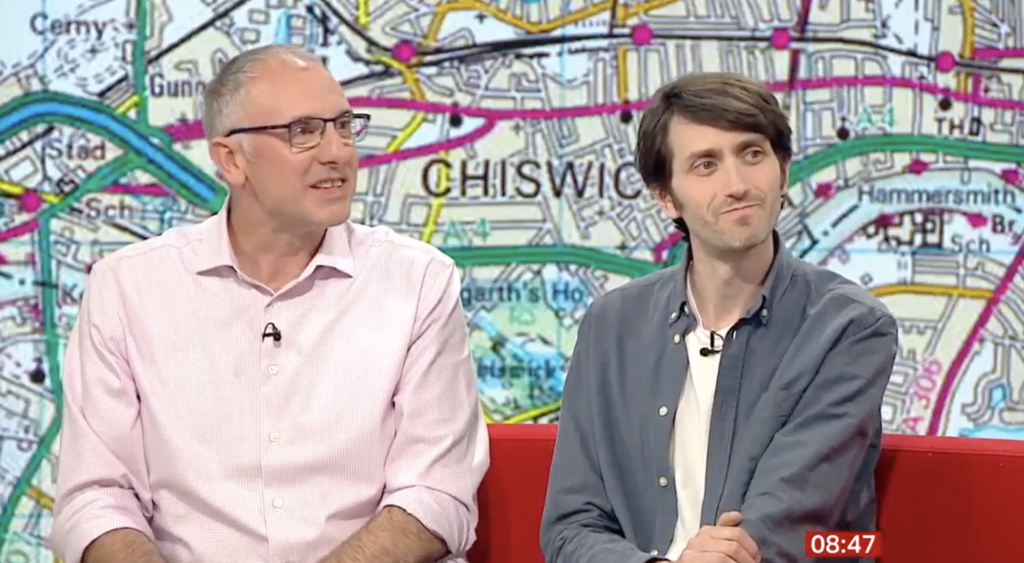
How Shout! Communications can help you
If you want to be on TV, get in touch with us. Whether you’re looking for coverage for your PR campaign or seeking ad-hoc TV appearances tied to the news agenda, we can secure those opportunities and get you one step closer to a television studio.
We also offer spokesperson training sessions, so you’re equipped with all the tools and the confidence to give your best performance.
For more information, please contact us on 020 7240 7373 or email hello@shoutcommunications.co.uk.
